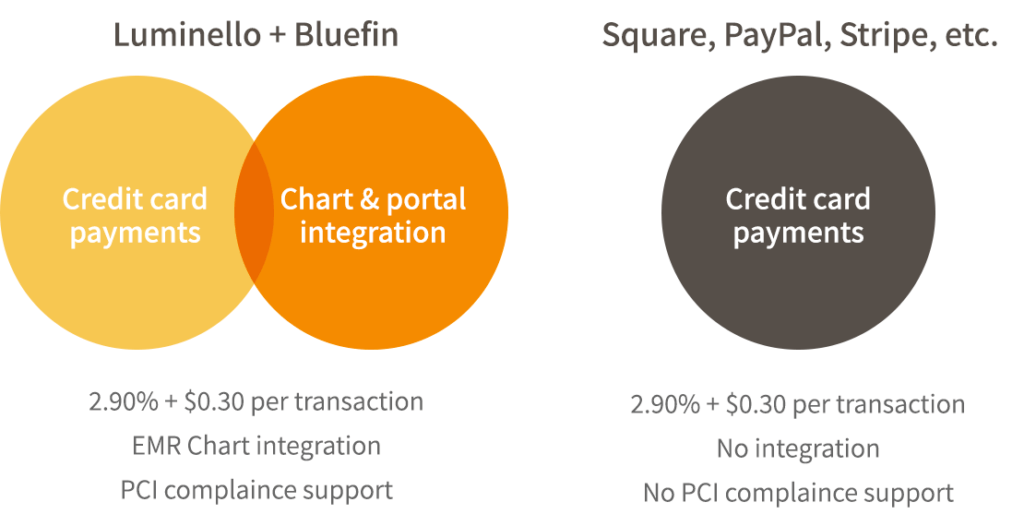When it comes to legal issues, prevention is by far the best medicine. In this article, we will talk about good forensic habits that will protect you from certified letters signed by attorneys. Much of this advice is gleaned from that classic textbook, Clinical Handbook of Psychiatry and the Law (Gutheil and Appelbaum, Lippincott Williams and Wilkins, 3rd ed., 2000).
Malpractice: A Primer
While nobody likes to practice “defensive medicine,” the spectre of a malpractice suit underlies most psychiatrists’ interest in reading about forensic issues. Luckily, the rumor that psychiatrists are at relatively low risk of being sued is quite true – we share that with family practitioners. Surgeons (especially obstetricians) and anesthesiologists are the specialists most prone to lawsuits, presumably because in both cases, the risk of serious harm is high, and close doctor-patient relationships are less common.
The standard mnemonic for understanding malpractice verdicts consists of the “4 D’s” of malpractice: “Dereliction of Duty leads Directly to Damage.” Each of the four D’s must be present before you can be convicted of malpractice.
Dereliction refers to negligent medical practice that deviates from accepted professional standards; duty refers to the requirement that you have an official doctor-patient relationship; directly refers to the need to show that the negligence was causally related to the injury; and damage refers to the fact that the patient must have actually been harmed by the alleged negligence. It’s helpful to go through this mnemonic the next time you become worried about a possible suit. It’s difficult for attorneys to convincingly demonstrate each of these four elements, particularly in psychiatry, where harmful medical actions are rare.
In deciding what you need to focus on in your own clinical practice to prevent allegations of malpractice, it would be helpful to know something about the most common causes of malpractice suits. Unfortunately, it’s hard to find reliable sources of this information, because only about 10% of all suits even end up in court – the rest are kept secret within the files of various insurance companies.
Nonetheless, combining information from Gutheil and Appelbaum and other sources yields the following list of the most common reasons that psychiatrists are sued for malpractice:
- Failure to prevent suicide is the single most common cause of psychiatric malpractice suits, according to the APA-endorsed liability insurance program (Bender E, Psychiatric News August 15, 2003; vol. 38, p. 11)
- Improper diagnosis or treatment (e.g., choosing the wrong medication, the wrong dose, not monitoring for side effects, etc…)
- Boundary violations (generally meaning sexual contact with patients)
- Failure to maintain confidentiality
- Problems that arise in shared treatment (e.g., a psychiatrist might be held responsible for a collaborating therapist’s negligence).
Documentation
Lawyers are unanimous that the best defense in court against a malpractice allegation is good documentation in your chart. Juries are more likely to believe what you wrote in the chart than what you say on the witness stand, because your chart notes were written when you were concerned only with documenting the facts. The problem, of course, is that we are all busy and do not take time to write as much as we should in our charts. As you write, think about it this way: “Am I documenting the essence of the crucial clinical judgments that I am making in this case?”
The two key things to document are: 1. What specific treatments you provided; and 2. Why you chose or rejected specific treatments. Of course, you should make sure that you chose a reasonable course of action before documenting it. As put eloquently by one malpractice attorney: “What are the best cases we see? Good care that is well documented. What are the worst cases we see? Bad care, well documented” (Donna Vanderpool, J.D., quoted in Bender E, Psychiatric News August 15, 2003; vol. 38, p. 11). Don’t forget to obtain documents from your patient’s past care, particularly if that care was extensive. It may not be easy to get the records, but at least document your attempt.
Boundary issues
The most important thing to say about this issue is also the most obvious one: don’t ever have sexual contact with patients. But what kind of contact is appropriate? Not much, aside from handshakes and the occasional pat on the back. You can’t hug patients, even though many hugs are nonsexual and may be deemed “therapeutic” by some. Hugs are too commonly an early element of a slippery slope leading to sex.
Here are some other boundary “danger zones” to avoid. Don’t have sessions outside of your office, like in a café or on a park bench on a nice day. The temptation to shift from treatment to socializing is just too intense. The exception is behavior therapy for phobias, which often must occur close to the phobia’s source, so it is acceptable to accompany your patient to a grocery store or in an elevator if a treatment program requires it. Avoid any nontherapeutic interactions, such as hiring patients to do jobs or asking them to do errands. Avoid excessive self-disclosure, especially when it involves talking about your own troubles, such as your marriage problems – which is clearly dangerous conversational territory.
It is also important to point out that financial boundary violations are common and wholly unacceptable as well. In one egregious case, for instance, a patient paid a psychiatrist $8000/month for investment advice (example recounted by Ivan Goldberg, M.D., personal communication). Such arrangements can play havoc with treatment issues in a host of ways.
Abandonment issues
The rule of thumb is: Once a patient’s doctor, always their doctor, unless you carefully and deliberately terminate.
There are various situations in which you can ethically “fire” a patient, more genteelly known as “dismissing.”
Common scenarios include patients who don’t pay their bills or patients who are non-compliant with treatment (for example, patients who keep drinking or using drugs against your advice, or patients who do not take needed medication). In either of these cases, you can’t suddenly dismiss the patient, as that could be grounds for a lawsuit based on abandonment. You have to document that you have discussed the problem, and, if it can’t be resolved, you should send the patient a letter confirming the termination, with a copy in the chart.
Of course, you should first try to resolve the problem using your therapeutic skills. Taking the issue of the non-paying patient, for example, you should broach this topic long before you arrive at the point of dismissal. (Click here for some specific suggestions and here for a policies template.)
Some patients fire you, usually communicating this by simply not showing up and dropping quietly out of your practice. However, such patients are still officially your patients until you tell them they are dismissed.
Can you dismiss patients simply because you don’t like them? In a word, “no.” However, if bad chemistry between you and a patient is interfering with treatment, you’ll need to have a frank discussion, and usually this will result in a mutual agreement to refer to another clinician.
How to dismiss a patient. Gutheil and Appelbaum recommend a deliberate “approach of three.” This refers to three consecutive, documented communications to patients as part of the dismissal process (although, in some cases, a single letter is sufficient). For example, for patients who have stopped coming to appointments with no explanation, they recommend a template similar to the one below:
Dear Patient,
I have not heard from you in . I assume you no longer wish treatment at this time. I am closing your case. Should you at any future time wish to use mental health services, please do not hesitate to call me for an evaluation .
Don’t forget to put copies of letters in your chart and to document any attempts at phone calls. If, after dismissal, a patient calls to request treatment, you can schedule them for a full evaluation visit, during which you should address whatever issues led you to the dismissal.
When not to dismiss. Never dismiss patients when they are in the midst of a crisis – that’s considered abandonment, and if things go badly, can be cause for a malpractice claim. Give them plenty of time to transition to another provider, usually at least three months. And be available to call in prescriptions to bridge them to their next appointment.
Apologising
If a bad outcome occurs, you should apologize or express regret. Some doctors will not apologize, because they worry that an apology is an implicit admission of guilt that could theoretically be used in court to prove malpractice. Actually, many state laws explicitly do not allow clinicians’ apologies to be used as evidence. For example, Massachusetts General Law, C.233, s.23D, states that a doctor’s apology “shall be inadmissable as evidence of an admission of liability in a civil action.” Gutheil and Appelbaum recommend the following phrasing for an apology: “I’m truly sorry that I missed that side effect , but I will continue to do my best to treat you appropriately.” And remember – patients hate distant and uncompassionate doctors, and are more likely to sue people they dislike.
Informed Consent
From a legal perspective, true informed consent requires three elements:
- Sufficient information;
- Voluntary cooperation on the part of the patient;
- Competence to make a decision.
For outpatient psychiatrists, the most common difficulty with informed consent arises when you are prescribing medication and you have to decide how much to say about potential side effects. There is a fine line between divulging enough information to allow genuine informed consent, and not scaring the patient away from a potentially effective treatment. Making matters worse, side effects are a constantly shifting and politicized target. Regarding suicidality, for example, one month we hear that antidepressants may cause suicidal ideation; the next month we read that decreasing SSRI prescriptions are correlated with a rise in suicidality; and soon thereafter we hear that these findings were improperly reported. What’s a well-meaning psychiatrist to do?
Here is a common sense approach. Tell your patients about:
- The very severe side effects, even when they are rare; and
- The very common side effects, even when they are mild.
Thus, for example, while it’s clear that cardiac arrhythmias are very rare in patients taking stimulants, you need to disclose that possibility. If it were to occur, such a bad outcome would undoubtedly raise the possibility of legal action, especially if you have not documented that you mentioned the risk.
When you prescribe medications, you should also consider briefly mentioning that both psychotherapy and no treatment at all may be valid alternative options. This extra discussion is not as crucial for the more biologically-based conditions, such as schizophrenia, but is more important for conditions effectively treated with therapy, such as depression and anxiety disorders.
You also need to document your discussion of risks and benefits somehow. You can have the patient simply sign a boilerplate informed consent form (you can download one from www.thecarlatreport.com) or you can jot a quick note, making liberal use of abbreviations to prevent hand cramp, such as: “R/B of med rx discussed, incl. SE of SI and akathisia. R/B of alt. tx and no tx discussed.”
Of course, it goes without saying that the best way to prevent a suit is to practice excellent medicine, something we should be striving for everyday.
Verdict:
Good habits each day keep the lawyers away!
Source: We thank The Carlat Psychiatry Report for allowing us to re-post this article. Luminello subscribers get a discount on The Carlat Report newsletters, books, CME credit opportunities, and ABPN Maintenance of Certification courses. Learn more


